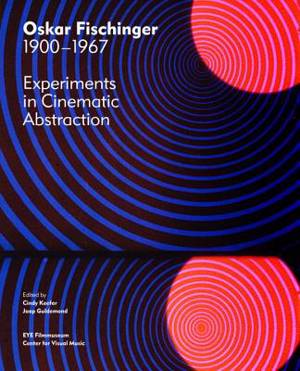
En raison d'une grêve chez bpost, votre commande pourrait être retardée. Vous avez besoin d’un livre rapidement ? Nos magasins vous accueillent à bras ouverts !
- Retrait gratuit dans votre magasin Club
- 7.000.000 titres dans notre catalogue
- Payer en toute sécurité
- Toujours un magasin près de chez vous
En raison de la grêve chez bpost, votre commande pourrait être retardée. Vous avez besoin d’un livre rapidement ? Nos magasins vous accueillent à bras ouverts !
- Retrait gratuit dans votre magasin Club
- 7.000.0000 titres dans notre catalogue
- Payer en toute sécurité
- Toujours un magasin près de chez vous
Oskar Fischinger 1900-1967
Experiments in Cinematic Abstraction
Cindy Keefer, Jaap Guldemond
Livre broché | Anglais
55,45 €
+ 110 points
Description
The German-American filmmaker Oskar Fischinger is one of the main protagonists in the history of animation and abstract cinema. From the 1920s onward, this pioneer of visual music coupled abstract images with music and rhythms, long before the arrival of the music video.
Fischinger was a true virtuoso who created complex animated patterns that develop dynamic rhythms, harmonies, and counterpoints. He played an important and influential role in the development of early abstraction in film during the interwar period, amid artistic movements such as Orphism (Kupka, Delaunay), Neo-Plasticism (Mondrian, Van Doesburg), Suprematism (Melevich), and Futurism (Marinetti, Boccioni).
In 1926 he began working with multiple-projector performances, creating some of the earliest cinematic immersive environments. The book examines his animation and painting, his use of music, his experiences in Hollywood, and his influence on today's filmmakers, artists, and animators, and features previously unpublished documents including essays by Fischinger himself.Spécifications
Parties prenantes
- Auteur(s) :
- Editeur:
Contenu
- Nombre de pages :
- 240
- Langue:
- Anglais
Caractéristiques
- EAN:
- 9780500970515
- Date de parution :
- 09-09-13
- Format:
- Livre broché
- Format numérique:
- Trade paperback (VS)
- Dimensions :
- 211 mm x 259 mm
- Poids :
- 907 g

Les avis
Nous publions uniquement les avis qui respectent les conditions requises. Consultez nos conditions pour les avis.






